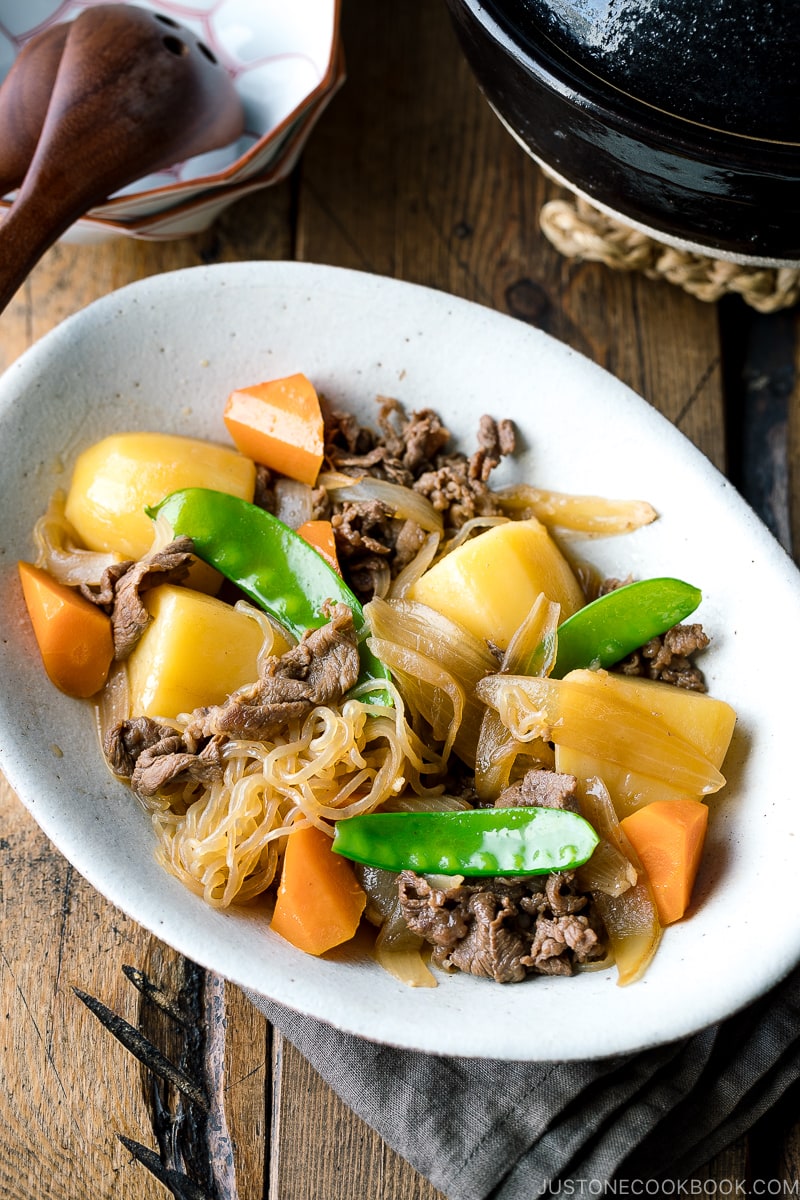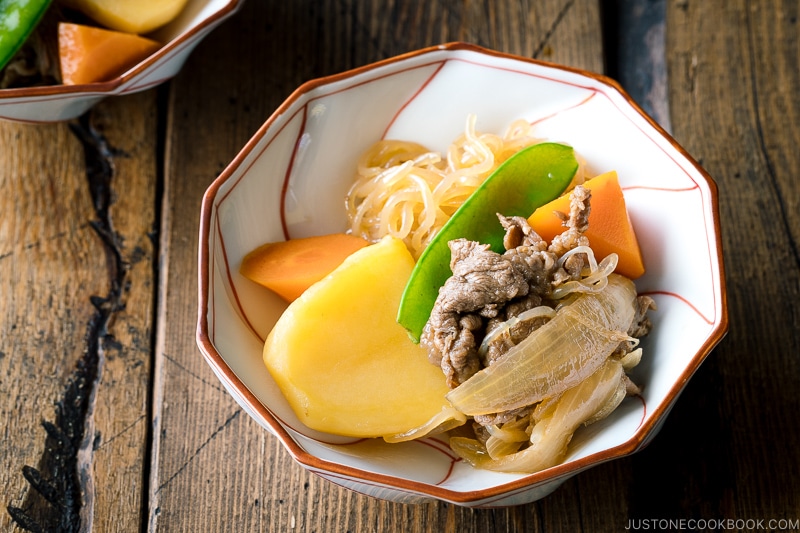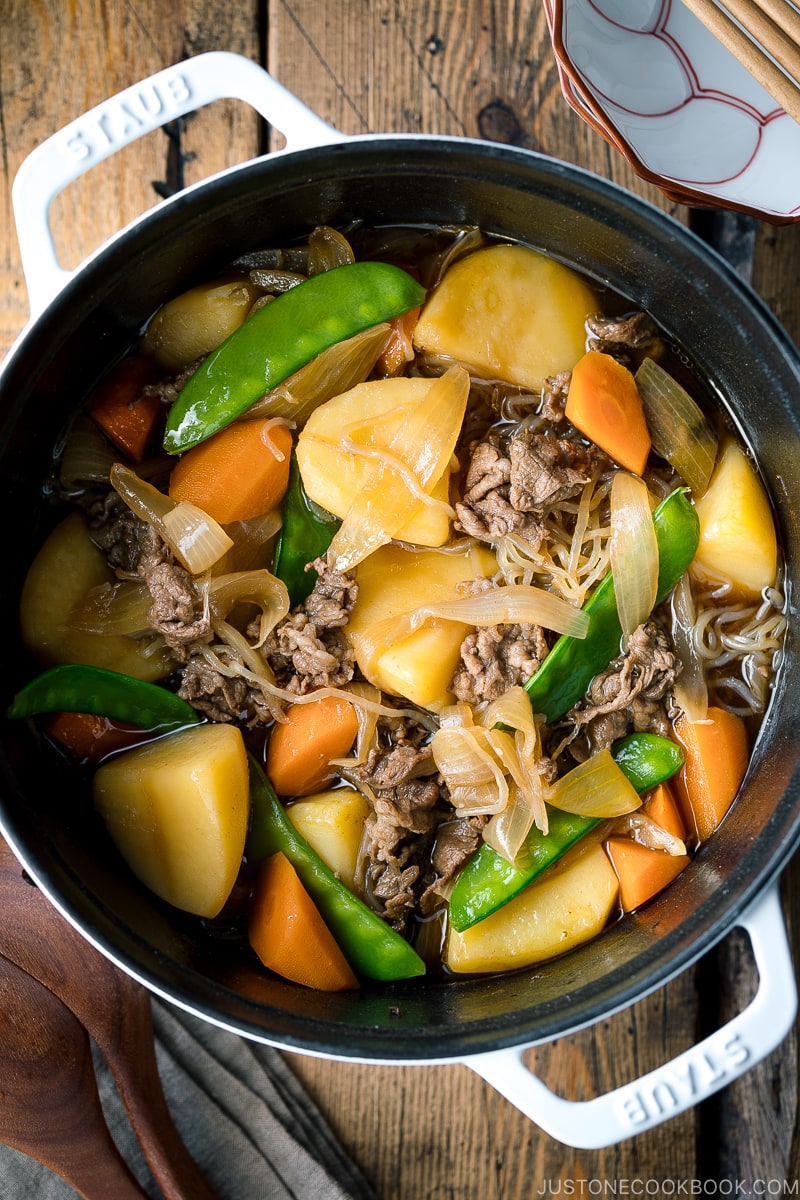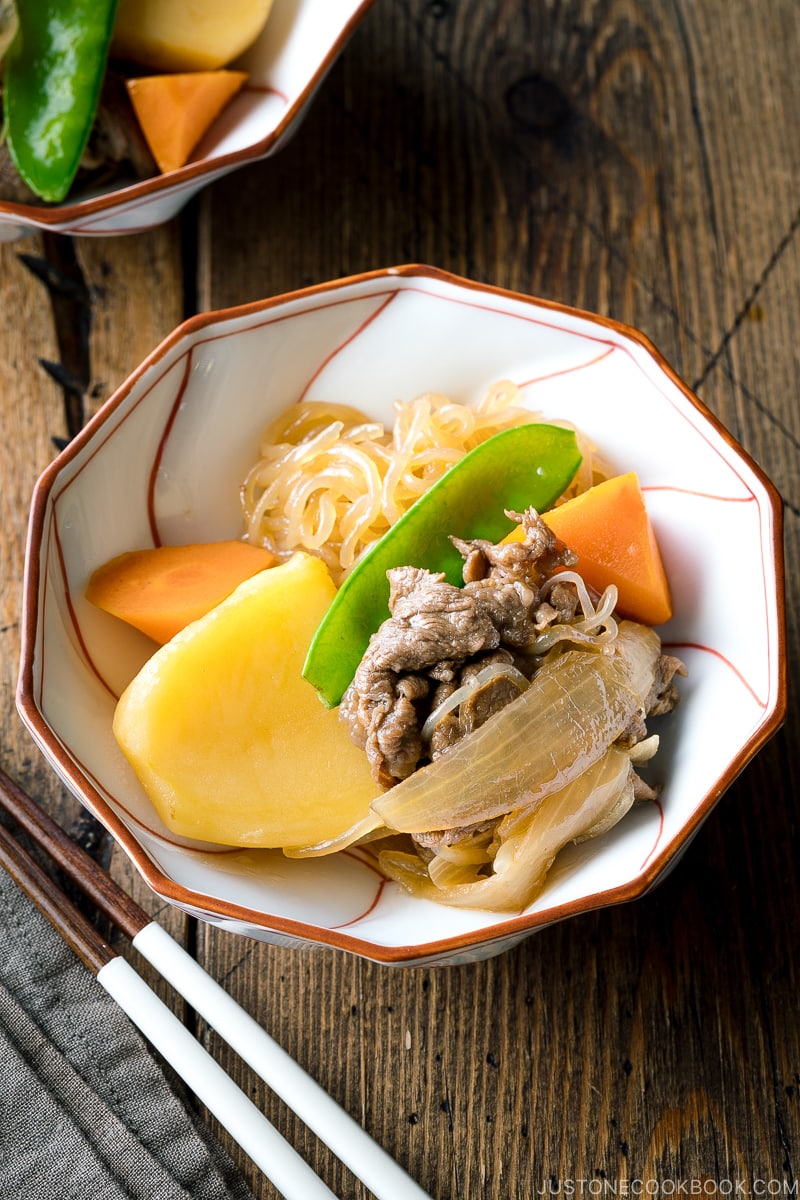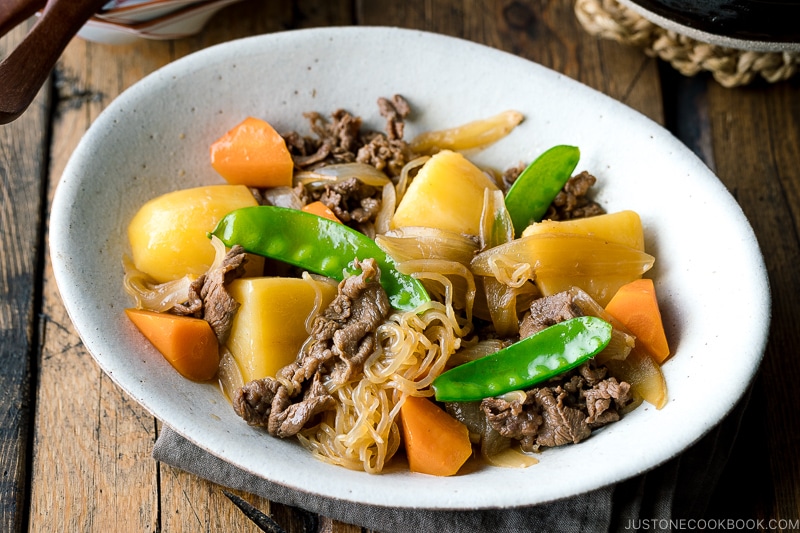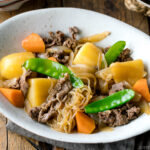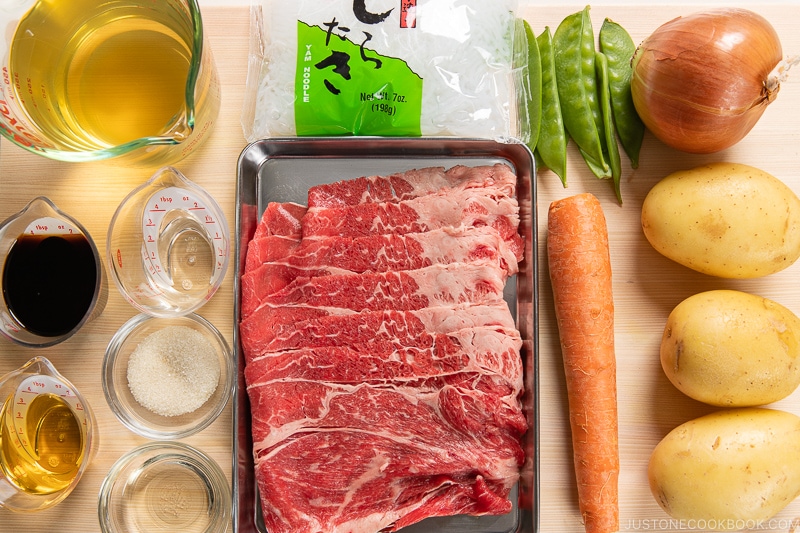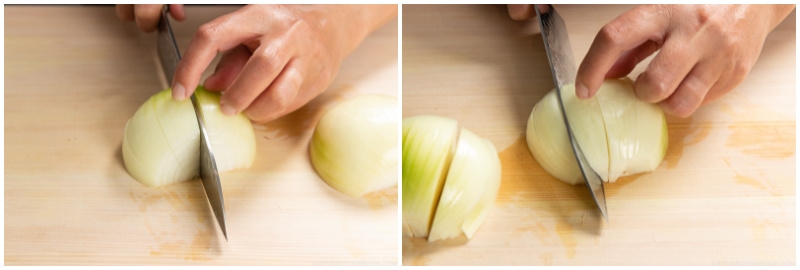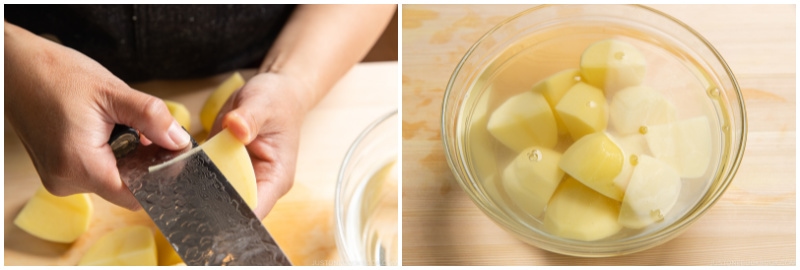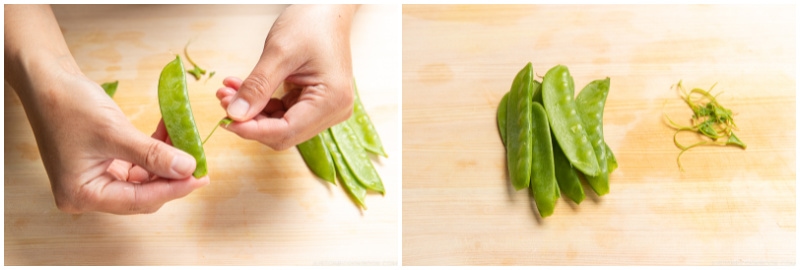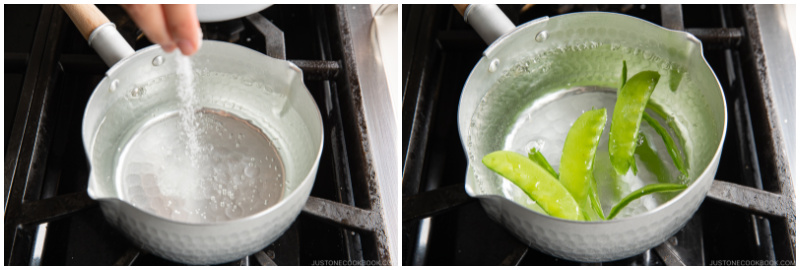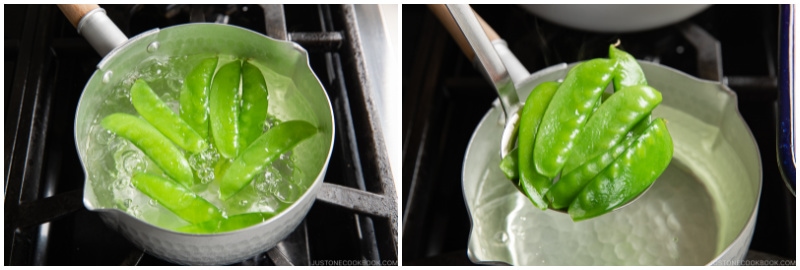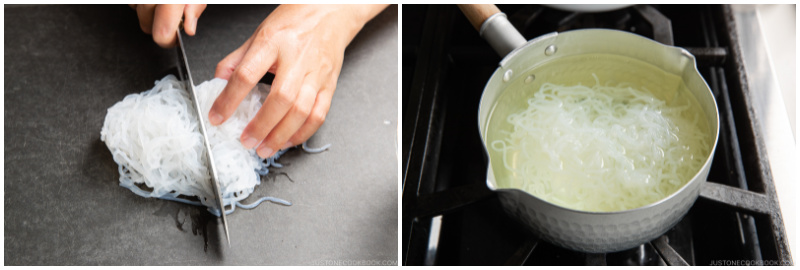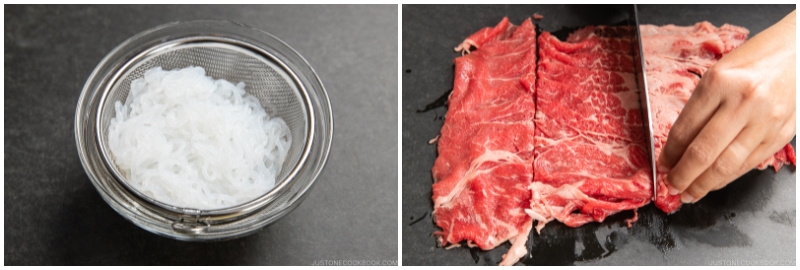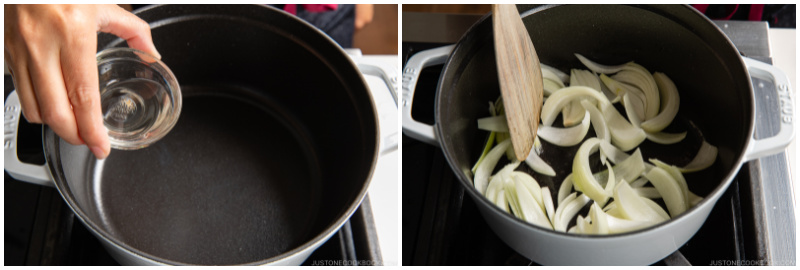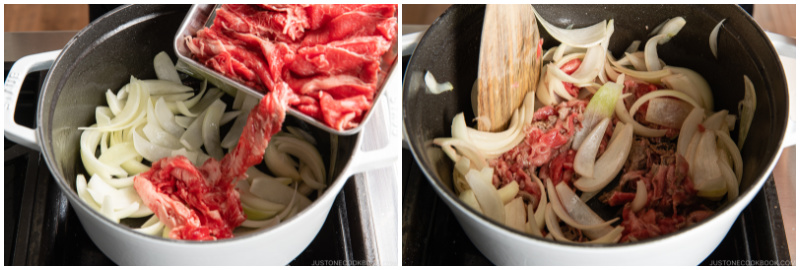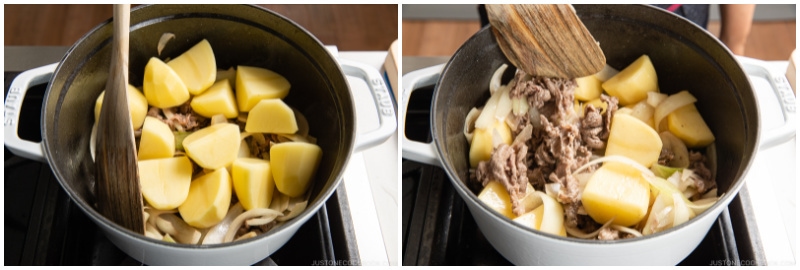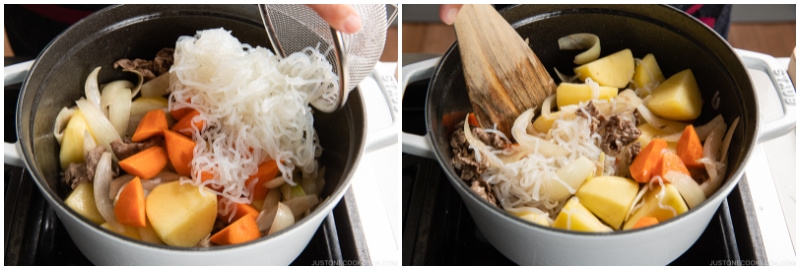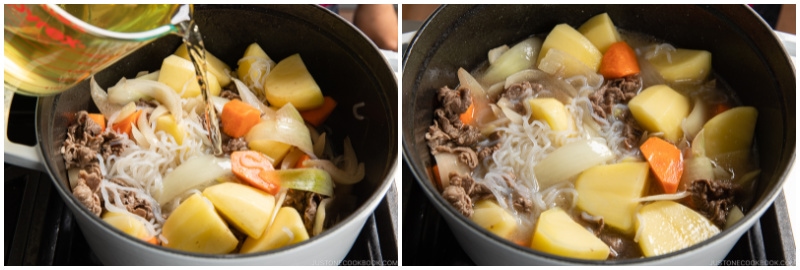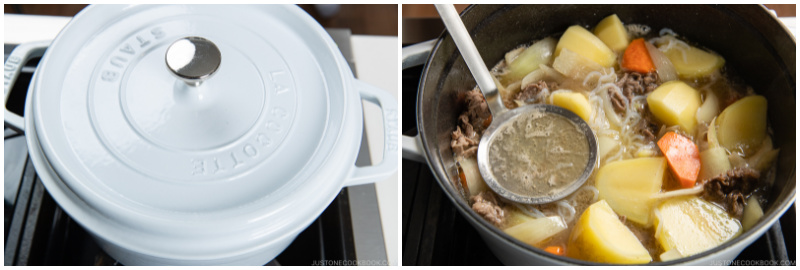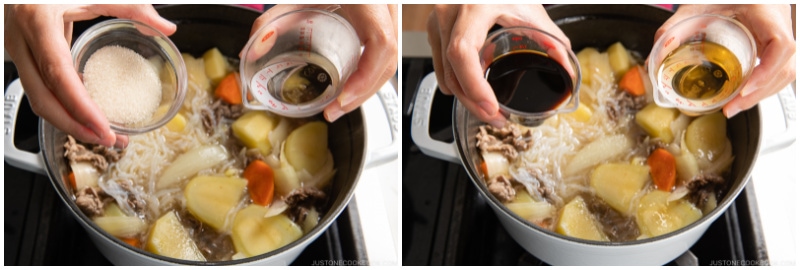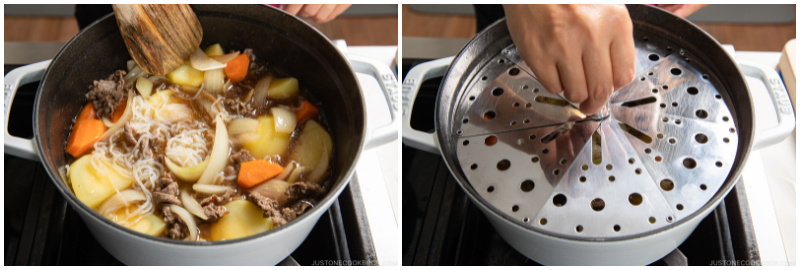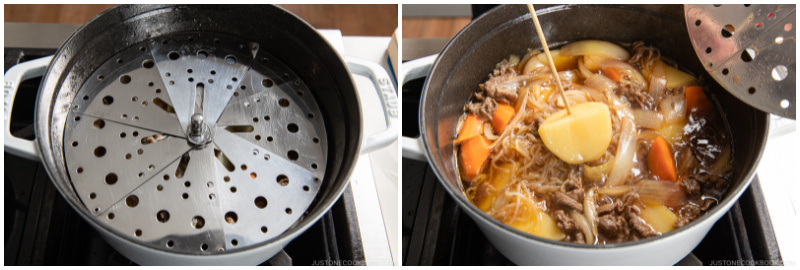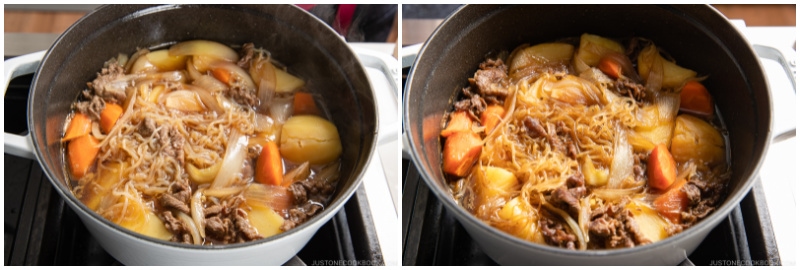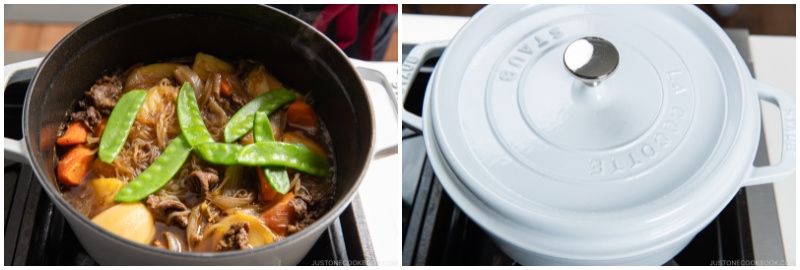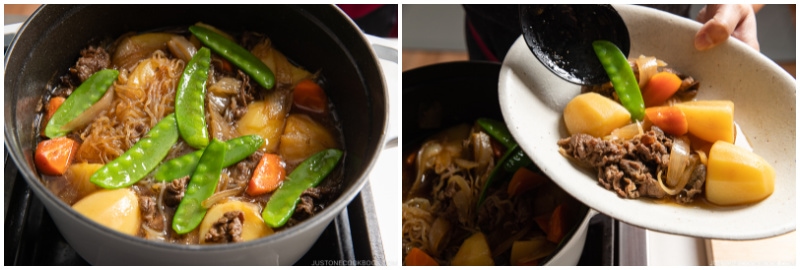Nikujaga (肉じゃが) or Japanese Meat and Potato Stew is synonymous with good old home cooking in Japan. It’s the dish that everyone frequently eats at home and remembers fondly that their mom used to make. Let’s make a delicious Nikujaga that steals your family’s heart!
What is Nikujaga?
Nikujaga literally means meat (niku) and potatoes (jaga from jagaimo). Potatoes make up the majority of the dish, with some thinly sliced beef or pork, onion, shirataki noodles (ito konnyaku), and a colorful mix of vegetables. The ingredients are stewed in soy sauce, sugar, sake, and mirin, along with dashi (or water) in a pot, rendering a familiar Japanese flavor. In western Japan, nikujaga typically features beef, while pork is more commonly used in eastern Japan. It’s a classic yoshoku (Western-influenced Japanese cuisine) dish that’s iconic in Japanese home cooking as ofukuro no aji (おふくろの味)—the taste of mother’s cooking. For many, nikujaga is an honest-to-goodness comfort food.
History of Nikujaga
Nikujaga originated in the Imperial Japanese Navy in the late 19th century. General Heihachiro Togo, who studied in Portsmouth, England in the late 1800s, asked the naval cook to create a version of the beef stew served in the British Royal Navy. As the chef had never tried beef stew before, so he invented his own version with soy sauce and sugar, similar to Sukiyaki. That dish, called amani (甘煮) back then, was introduced to sailors as a highly nutritious food. The ingredients were easy to source as they are similar to the ones used in the famous Navy curry recipe. Nikujaga became popular in the Navy, and you can find the recipe in the “Navy kitchen textbook.” Nikujaga didn’t appear on the table at home until the 1970s when beef and potatoes became more commonly available to the Japanese public. That’s also when beef stew and curry rice started to become popular and home cooks started to use those ingredients in their cooking.
Ingredients You’ll Need
potatoes – I use Yukon golds thinly sliced beef or pork – thinly sliced meat cooks faster; I use beef chuck or ribeye, or use thinly sliced pork; substitute with shiitake, king oyster, or portobello mushrooms for vegan/vegetarian onion shirataki noodles (ito konnyaku) carrot green vegetable – most commonly snow peas, green beans, or green peas seasonings – soy sauce, sugar, mirin, sake, and optional dashi (Japanese soup stock)
How To Make Nikujaga
Nikujaga tastes even better the next day! Store it in the refrigerator and reheat gently when you plan to serve it. See my full instructions in the recipe card below.
5 Important Tips To Make the Best Nikujaga
What to Serve with Nikujaga
Rice: Steamed rice, Takikomi Gohan Soup: Miso Soup, Kakitama Jiru (Japanese Egg Drop Soup) Sides: Grilled Mackerel (if you want more protein), Spinach Ohitashi, Chilled Tofu, Green Bean Shiraae, Eggplant Agebitashi
Sign up for the free newsletter delivered to your inbox and stay in touch with me on Facebook, Pinterest, YouTube, and Instagram for all the latest updates. Editor’s Note: The post was originally published on April 19, 2012. New images and video have been added to the post and the content has been updated.
